

The Bonner Bridge is an Outer Banks staple for those who visit Hatteras Island. On February 25th, 2019 after two years of construction, the new replacement bridge is now open for business! Vehicles can now travel from Nags Head to Hatteras Island on the brand-new bridge. The Herbert C. Bonner bridge is a huge piece of Outer Banks history providing a new way of transportation onto Hatteras Island. Here’s a quick rundown of facts that you need to know about the brand-new replacement bridge!
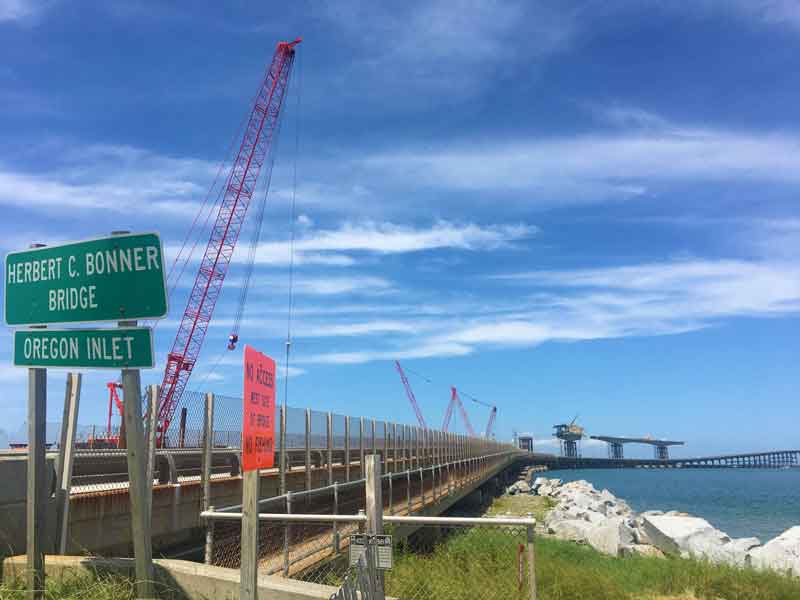
1. Construction on the new bridge began in March 2016.
2. The new bridge is about 2.8 miles long, rises 90 feet over Oregon Inlet, and cost $252 million dollars.
3. Marc Basnight was an Outer Banks native and served as an NC state senator. The new bridge is named in his honor.
4. The Marc Basnight bridge should last 100 years or more.
5. In 1963, the original Herbert C. Bonner bridge was open for business. The bridge allowed access to Hatteras Island by vehicle rather than ferry.
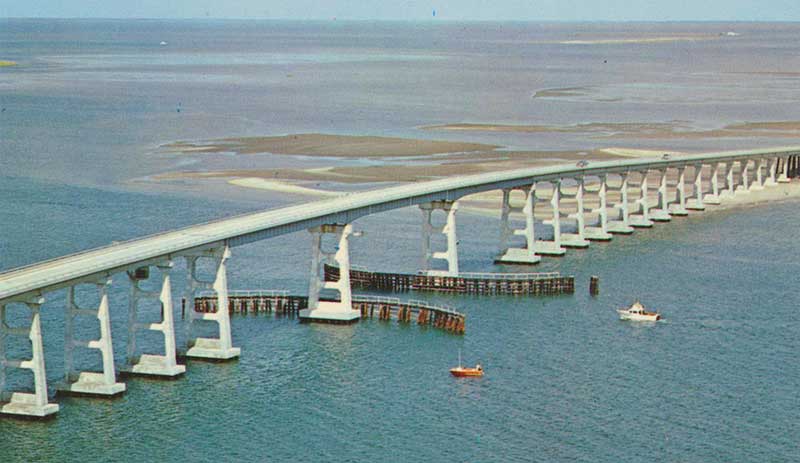
6. An informal ceremony was held for pedestrian walking and running on February 9th, 2019.
7. The old Hatteras Island bridge survived harsh elements for 56 years. Originally, it was only supposed to last for 20.
8. A new pedestrian walkway uses 1,000 feet of the original Bonner Bridge. However, the rest of the old bridge was used to make an artificial coral reef.
9. The new bridge was formally dedicated in April 2019.
10. The Marc Basnight bridge is thoroughly protected against the salt water of Oregon Inlet. In addition, this bridge is the first bridge in North Carolina to be built with this technology.
Whether you know it or not, the Outer Banks is full of a ton of history and folklore. This includes some pretty scary stories. Halloween is here! So we’ve come up with 5 of the spookiest, most famous ghost stories of the Outer Banks! Read on if you dare!
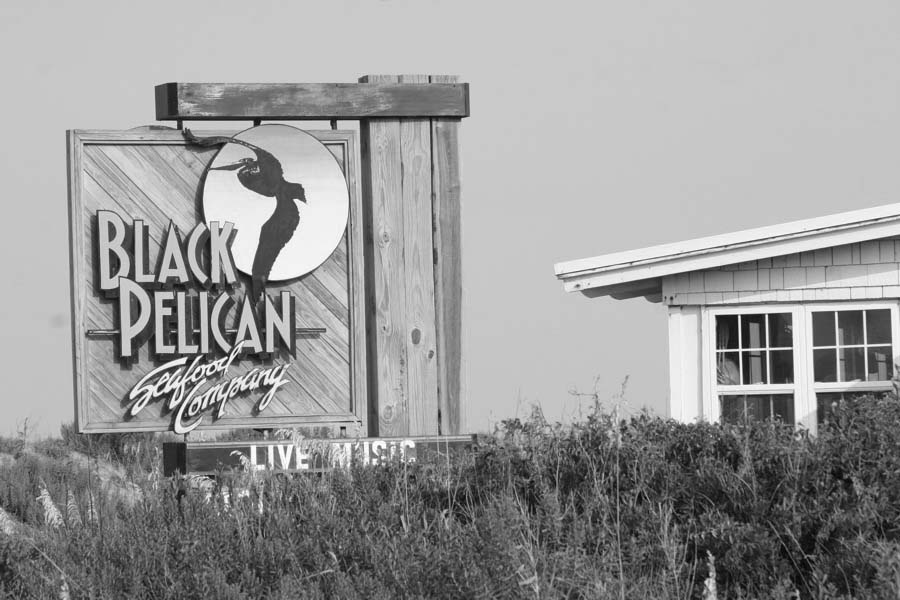
The Black Pelican is known today as one of the most delicious oceanfront restaurants on the Outer Banks. However, the Black Pelican has a rich history. This popular restaurant was once Station Six, one of the lifesaving stations built on the Outer Banks.
In 1884, the keeper of Station Six, Captian James Hobbs had an argument with a surfman named T.L. Daniels. T.L. had offended Captain Hobbs’ wife so badly, the Captian shot T.L. dead. After the incident, the crew of Station 6 cleaned up and buried T.L.’s body at sea. The spirit of T.L. still lives on at Black Pelican today. Black Pelican staff have even reported seeing a figure around the restaurant, hearing footsteps, and doors closing on their own.
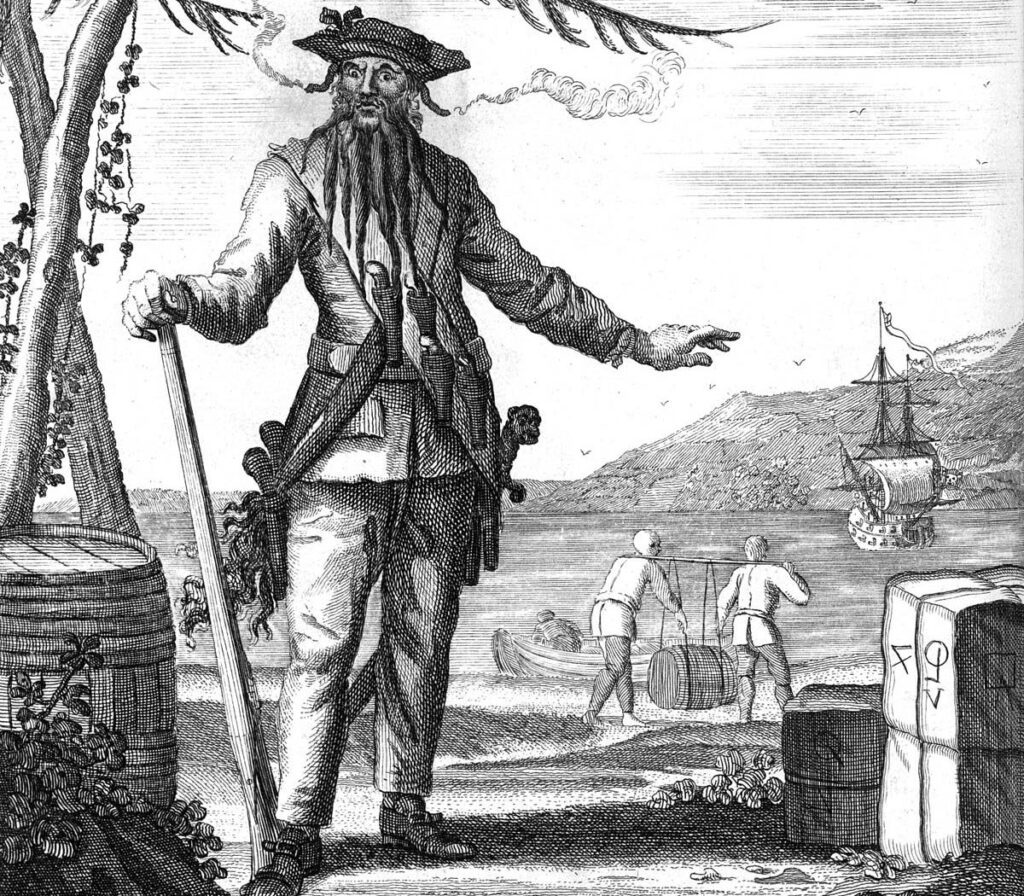
Edward Teach was a fearsome and ruthless pirate. You may know him better by the name of Blackbeard. Blackbeard called the island of Ocracoke his hideout and looting grounds for many years. On November 22, 1718, Blackbeard met his fate at the hand of Lt. Robert Maynard, giving the name Teach’s Hole to the cove where he was defeated.
As proof of defeat, Lt. Maynard severed Blackbeard’s head and hung it from the bow of his ship. His body was thrown overboard. Legend is, Blackbeards’ head was still screaming after the beheading and his body swam around the ship before death. There have been stories of a headless body swimming in the cove at Teach’s Hole and a headless Blackbeard walking around searching for his head.

Many locals and visitors know about the mystery of the Lost Colony. 110 men, women, and children came to Roanoke Island from England to start a new life. Supplies ran short and the colony mysteriously disappeared after three years. Speculations have been made but no one knows for sure where the colony went, and the colony is now best known as The Lost Colony.
Virginia Dare is documented as the first English Child to be born in the new world. She was one of the members of the Lost Colony. Legend states that Virginia was transformed into a white doe after death by a Native American shaman. The ghost of Virginia Dare roams Roanoke Island still today in the form of a glowy white doe; seen every now and then by locals and visitors.

The coast of the Outer Banks has been named the Graveyard of the Atlantic for a reason. Thousands of ships have wrecked since the 16th century. The dangerous rocks make the waters hard to navigate and can destroy ships. Storms that pass can close inlets, open up new inlets, or even make seemingly passable inlets too narrow for ships to pass. The inlets had become such a problem that lighthouses were built to guide ships and the U.S. Lifesaving Service was initiated to save lives and coastlines from wrecks.
To this day, reports have been made of seeing ghost ships sailing on the waters. Sounds of drowning and ghastly screaming have also been heard.
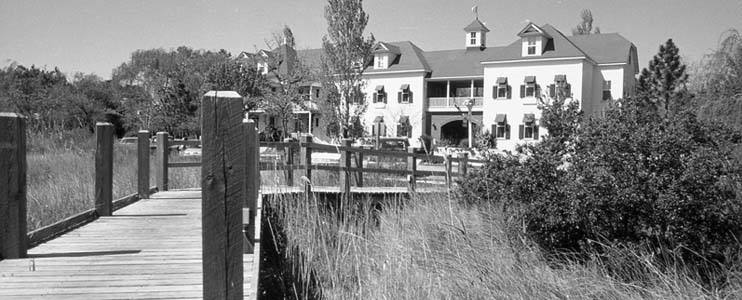
Oh, Mr. Roscoe; previous owner of the Roanoke Island Inn. He was everyone’s favorite postmaster…until the day he lost his job in the 1800s. Roscoe was so humiliated that he lost his job, he secluded himself from his friends and family. He never left his room except if he knew no one was around. Years later, Roscoe’s time came to an end and strange events began.
People at the Roanoke Island Inn would sometimes see a man in a post uniform leaving and returning to the house. Some report seeing a tall figure climbing the stairs. Other reports include footsteps in room number seven, blinds moving in windows, a radio turning on by itself in room number three, and vases breaking.
The Outer Banks is definitely a unique place, from the wild horses that roam our beaches to the vast history stemming from the Lost Colony and ending with our locals. If you’ve ever really listened to a born and raised Outer Banks local, you’ll notice a slight accent. A mix of southern twang with a little something you can’t really put your finger on. The Brogue dialect of the Outer Banks is a combination of good old southern drawl mixed with the remnants of old English pronunciations and terms that you probably haven’t ever heard in your life! So, we’ve given you a short list of pronunciations commonly used Outer Banks terms, words and their meanings so you can keep up with the locals and learn something new!
The Brogue dialect of the Outer Banks is a combination of good old southern drawl mixed with the remnants of old English pronunciations and terms that you probably haven’t ever heard in your life! So, we’ve given you a few commonly used Outer Banks pronunciations, terms, words and their meanings so you can keep up with the locals and learn something new!
(High tide on the sound side)
How locals (usually born and raised Ocracoke natives) pronounce the phrase “high tide on the soundside”; describing that the tide is high on the sound side of the island.

Northernmost Outer Banks town; home to the wild horses that roam the beaches
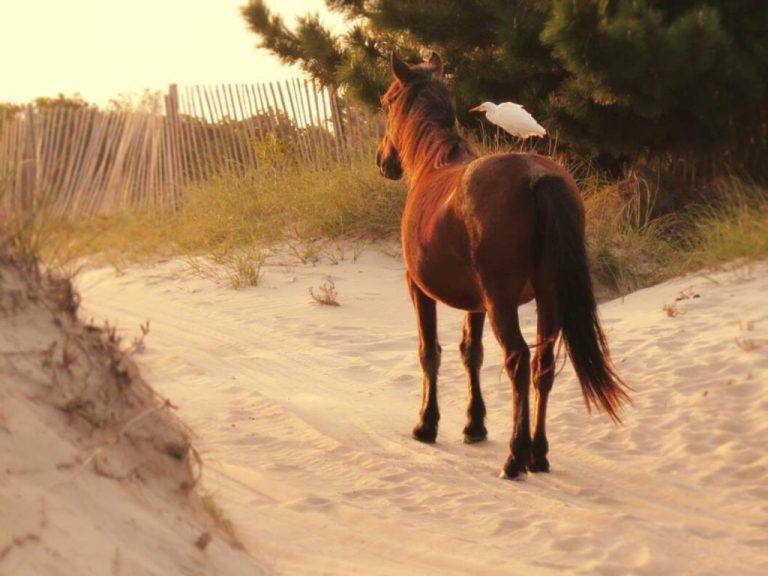
To be worn out and tired or to mess something up

“I’ve been out on the beach all day, I’m pure mommucked” or “She really mommucked up that cake”
When the water is flat and glassy; no wind at all

“The water is so pretty when it’s slickcam”
(pie-zir) – Porch

“It’s a nice night to sit out on the pizer”